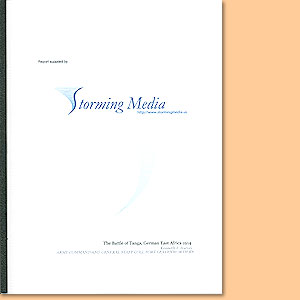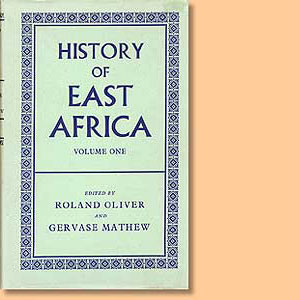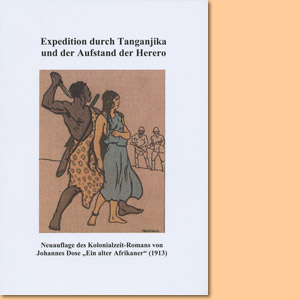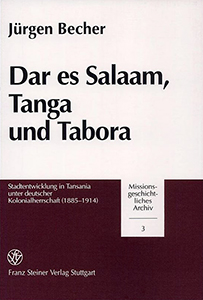Mikono ya damu: «Hands of Blood», by Erick J. Mann
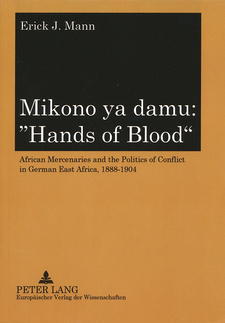
Mikono ya damu: «Hands of Blood», by Erick J.; Peter Lang, Frankfurt a. M., 2002; ISBN 3631376146 / ISBN 3-631-37614-6; ISBN 9783631376140 / ISBN 978-3-631-37614-0
The focus of Erick J. Mann´s study, Mikono ya damu: «Hands of Blood», is to show how the pre-colonial legacies of various regions were manipulated by the Germans to secure their control over these territories and, in tum, how pre-existing features of Tanganyika's political and socio-economic order helped shape the German colonial army or Schutztruppe (defense force) and early colonial policies.
In order to do this, it is necessary to outline the dynamics of inter- and intra-regional relations and developments within local political, economic and social structures. Most studies of colonial intervention have been content to attribute the destruction of African political Systems to superior European firepower. This unqualified assertion precludes an appreciation of the complex socio-economic and political dynamics as diverse polities, and groups within those polities, sought to defend their interests. Why were some areas more resistant to German rule than others? What factors weakened the base of popular support, which was vital to carrying out organized and long-term resistance to the Germans and prevented organization beyond existing political realities? Were East African social Systems inherently susceptible to outside intervention, and inevitably unable to provide adequate resistance to the Germans? What was the nature of German colonial rule and the significance of the early administrative functions that the Schutztruppe was expected to fulfill? To resolve these questions, it is necessary to understand the political and social situations in each local area and how the Germans were forced to take account of them. One of the most fundamental problems in seeking to understand the nature of colonial conquest, is to explain the complex initial processes by which the colonial powers were able to conquer vast tracts of territory. The question is not only how pre-existing political and socio-economic inequalities and competition within and between African societies were used by the Germans to facilitate the conquest of Tanganyika, but more importantly, how these same divisions were expanded on by the Germans to consolidate their territorial gains and create a reliable colonial army to maintain that rule. Conquest, like the organization and development of colonial armies themselves, was not an act by a process initiated by extemal forces, but almost entirely conditioned and realized by local factors and initiatives. The problem faced by colonial armies was how and when to employ terror and/or local political compromise to achieve the "pacification" of a colony. The pre-colonial African legacies confronted by the Germans in Tanganyika between 1889 and 1905, were instrumental in determining the direction, form, speed, and degree of success that colonial conquest would take. The policies adopted by the colonial army, the Schutztruppe, during and after the conquest of various regions in Tanganyika, shaped the fundamental political, class, and economic relationships in what would eventually become the colonial state. The challenge is to recognize the often significant tune interval between initial conquest and the creation of the "established" colonial regime, a process that could last over a decade, and to understand how this period of interaction between Europeans and African soldiers, between African soldiers and the wider African population, between Europeans and African elites, and between African elites and their subjects, were being manipulated and transformed prior to and during the conquest. With the exception of scholars such as David Killingray and Myron Echenberg, the complexities and problems surrounding the formation, organization, and subsequent development of colonial armies in the initial period of conquest have not been addressed. […]
This is an excerpt from the book: Mikono ya damu: «Hands of Blood», by Erick J. Mann.
Title: Mikono ya damu: «Hands of Blood»
Subtitle: African Mercenairies and the Politics of Conflict in German East Africa, 1888-1904
Author: Erick J. Mann
Publisher: Peter Lang
Frankfurt a. M., 2002
ISBN 3631376146 / ISBN 3-631-37614-6
ISBN 9783631376140 / ISBN 978-3-631-37614-0
Softcover, 15x21 cm, 333 pages, 10 map scetches
Weitere Buchempfehlungen
The Battle of Tanga, German East Africa 1914
How German and British forces were organized, trained, equipped and led
The Fires Beneath: The Life of Monica Wilson, South African Anthropologist
The Fires Beneath: The life of anthropologist Monica Wilson is a South African story of groundbreaking scholarship, passionate creativity and personal tragedy.
History of East Africa Volume 1
One of three standard setting Volumes in which the history of East Africa is studied from an African as well as from a European standpoint
Britisch-Ostafrika. Kenya - Tanganyika - Uganda
Interessante landeskundliche und wirtschaftliche Übersicht für auswanderungswillige Schweizer in den 50er Jahren
Expedition durch Tanganjika und der Aufstand der Herero
Expedition durch Tanganjika und der Aufstand der Herero ist eine Neuauflage des Romans Ein alter Afrikaner (1913).
Dar es Salaam, Tanga und Tabora
Die Stadtentwicklung von Dar es Salaam, Tanga und Tabora in Tansania unter deutscher Kolonialherrschaft 1885-1914.


